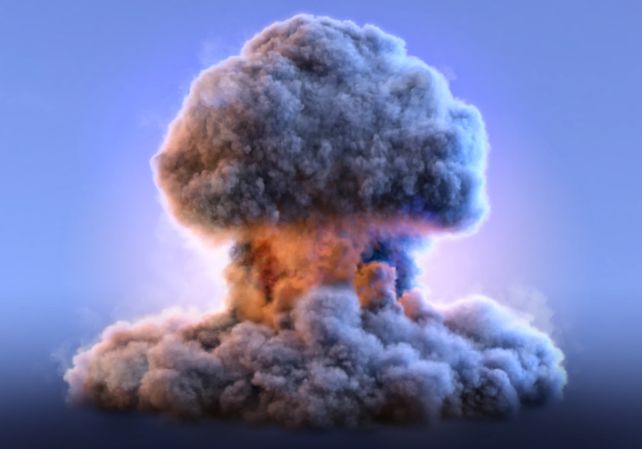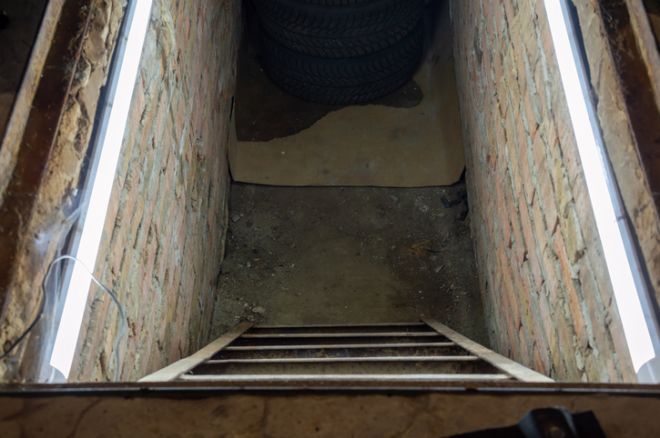Nuclear Emergency? Here’s How To Stay Alive
Don’t Panic, Just Prep: Your Guide To Surviving A Nuclear Emergency - Page 2
Share the post
Share this link via
Or copy link

Americans are growing increasingly concerned about potential Iranian retaliation following President Donald Trump’s missile strikes on nuclear facilities in Fordow, Natanz, and Isfahan. Although 79-year-old Trump claimed the sites were “completely and totally obliterated” during the strike, a new assessment from the Defense Intelligence Agency suggests otherwise.
According to sources familiar with the findings, the strikes allegedly failed to cause significant damage to the facilities. Two officials told CNN that Iran’s stockpile of enriched uranium—the radioactive metal that serves as the primary fuel for nuclear weapons—remains intact, with one noting that most of the centrifuges were not destroyed. Another source said intelligence indicates that enriched uranium was moved before the strikes occurred.
“So the (DIA) assessment is that the U.S. set them back maybe a few months, tops,” one source noted.
RELATED CONTENT: The Military Sneakily Targets Black & Low-Income Communities To Enlist Through “Encouraging” Offers
Love MadameNoire? Get more! Join the MadameNoire Newsletter
We care about your data. See our privacy policy.
An investigation into the damage is still ongoing, but White House press secretary Karoline Leavitt refuted the assessment’s claims, calling it “flat-out wrong.”
Leavitt added, “The leaking of this alleged assessment is a clear attempt to demean President Trump and discredit the brave fighter pilots who conducted a perfectly executed mission to obliterate Iran’s nuclear program. Everyone knows what happens when you drop fourteen 30,000-pound bombs perfectly on their targets: total obliteration.”
Iran isn’t the only country with nuclear weapons.

Whether or not Iran possesses nuclear weapons, it wouldn’t be the only country the U.S. needs to worry about in terms of nuclear threats. Russia, in particular, has an extensive nuclear arsenal and has repeatedly issued threats toward the U.S. over the years. According to the International Campaign to Abolish Nuclear Weapons (ICAN), Russia currently holds the largest number of confirmed nuclear warheads—over 5,500. Other nuclear-armed countries include China, France, the United Kingdom, Pakistan, India, Israel, and North Korea.
So, what would you need to do if any of these nations launched a nuclear strike, and how much time would you have to act?
Get underground—and fast!

According to Business Insider, it depends on the launch location. For example, if Russia launched a missile from international waters just off the U.S. East Coast, residents in cities like New York, Boston, and Washington, D.C., might only have 10 to 15 minutes to prepare. In such an event, most people would receive a Wireless Emergency Alert (WEA) on their phones, warning of incoming missiles and urging them to seek shelter immediately. The Emergency Alert System (EAS) would broadcast the same message on television, radio, satellite, and cable networks. Additionally, the president could issue a “presidential alert” to all cell phones nationwide.
If an attack warning is issued, immediate shelter is critical. The safest place to be is underground, or, if that’s not possible, inside a sturdy brick or concrete building, according to the Red Cross. Head to the lowest level or the center of the structure to put as much material between you and the radioactive fallout as possible. Turn off ventilation systems like fans, air conditioners, and forced-air heating units that could draw in contaminated air. Close all windows, doors, and fireplace dampers to seal the space.
Radiation is most dangerous in the first few hours after a blast, but it decreases rapidly. Plan to stay sheltered for at least 24 hours unless instructed otherwise by authorities, though in some cases, you may need to remain inside for up to a month.
If you’re outside when the strike occurs, here’s what to do.

If you’re caught outside when a blast occurs, do not look directly at the flash or fireball, as it can cause blindness. Take immediate cover behind any object that might offer protection, lie flat on the ground, and shield your head. If you’re exposed and unable to find shelter right away, cover your mouth and nose with a cloth, towel, or mask to reduce inhalation of radioactive particles.
Fallout can travel hundreds of miles on the wind, so even those far from the blast site may still be at risk. Get indoors as soon as possible and once inside immediately remove your clothing to reduce radiation exposure. “Removing the outer layer of clothing can remove up to 90% of radioactive material,” the Red Cross notes.
Hopefully, we’ll never face a situation like this, but the more informed you are, the better your chances of staying safe.
RELATED CONTENT: 10 Trailblazing Black Women Who Shaped U.S. Foreign Policy
-

My Husband And I Attempted To Have A Creative Date Night At Home -Without A Babysitter - Here's How It Went
-

Vontélle Eyewear Founders Score History-Making Licensing Deal With Paramount
-

She Tried It: Ivy Park Drip 2 and 2.2 Black Pack
-

Our Health, Our Power: Debunking Myths And Taking Charge This Open Enrollment



